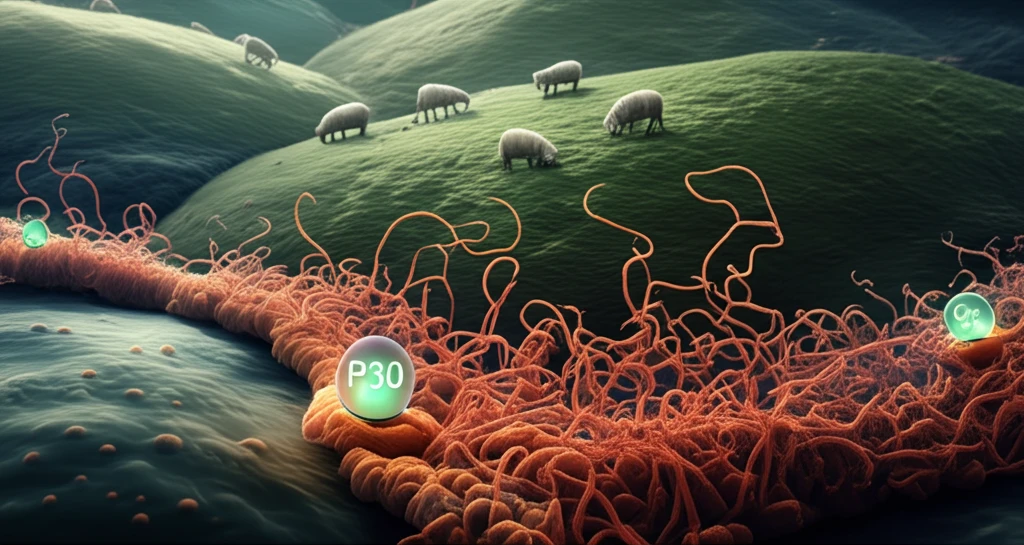
Decoding Dairy Diseases: How a Novel Mycoplasma Strain Could Revolutionize Sheep and Goat Farming
"Unveiling the Secrets of Mycoplasma agalactiae: A Breakthrough in P30 Protein Research Promises Enhanced Vaccines and Healthier Herds"
Contagious agalactia (CA), primarily affecting dairy sheep and goats, poses a significant threat to livestock health and productivity worldwide. Characterized by mastitis, arthritis, and keratoconjunctivitis, this disease, caused mainly by Mycoplasma agalactiae (M. agalactiae), leads to reduced milk production, increased animal suffering, and substantial economic losses for farmers. Understanding the intricacies of this pathogen is crucial for developing effective prevention and treatment strategies.
In Iran, where sheep and goat farming are vital to the agricultural sector, CA has long been a concern. Since 1966, the Razi Institute has pioneered efforts to combat this disease, developing a three-valent inactivated vaccine based on M. agalactiae strains isolated from various regions. This vaccine has been a cornerstone in managing CA, but continuous research is essential to improve its efficacy and adapt to evolving strains of the bacteria.
A key area of focus is the P30 protein, a specific and stable lipoprotein of M. agalactiae. This protein plays a critical role in the bacterium's interaction with the host's immune system, making it an ideal target for vaccine development. Recent studies have uncovered a novel P30 protein pattern in certain M. agalactiae strains, suggesting a major change in their genetic makeup. This discovery could have profound implications for how we approach CA prevention and treatment, potentially leading to more effective vaccines and diagnostic tools.
The P30 Protein Puzzle: Unlocking New Avenues for Vaccine Innovation

The P30 protein has emerged as a focal point in understanding and combating M. agalactiae. It’s not just any protein; it’s a stable, strongly immunogenic antigen, meaning it reliably triggers a robust immune response in the host. This makes it an excellent candidate for vaccine development, as a vaccine targeting P30 could potentially provide long-lasting protection against CA. However, the recent discovery of a novel P30 protein pattern adds a new layer of complexity to this field.
- Enhanced Immune Response: Vaccines designed to target this novel P30 protein pattern could elicit a more potent and specific immune response, leading to better protection against CA.
- Improved Diagnostics: Identifying this unique protein pattern could aid in developing more accurate diagnostic tests, allowing for rapid detection and control of M. agalactiae infections.
- Understanding Pathogen Evolution: Studying the genetic changes that led to this novel P30 pattern can provide insights into how M. agalactiae adapts and evolves, helping researchers stay one step ahead in the fight against this disease.
Looking Ahead: The Future of CA Prevention and Control
The discovery of a novel P30 protein pattern in Iranian vaccine strains of M. agalactiae marks a significant step forward in understanding and combating this costly disease. This finding opens new avenues for developing more effective vaccines and diagnostic tools, ultimately leading to healthier livestock and more sustainable farming practices. As research continues, we can expect even more exciting breakthroughs that will transform the way we approach CA prevention and control, ensuring the well-being of sheep and goat populations worldwide.
